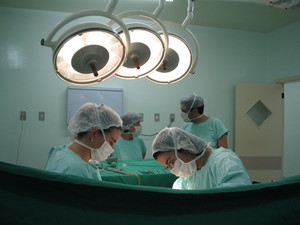Researchers at the National Institute of Allergy and Infectious Diseases (NIAID), seeing a connection between mastocytosis and idiopathic anaphylaxis, have been able to determine that a number of patients with idiopathic anaphylaxis have mutated mast cells. They are hoping to be able to soon treat idiopathic anaphylaxis by targeting inhibitors at the mutated cells.
People who suffer from anaphylactic reactions usually suffer from the symptoms as a direct result of an allergic reaction. But for two out of three people who the reactions, anaphylaxis cannot be attributed to any known cause. Doctors distinguish between the two types of reactions. Anaphylaxes that are a direct result of an allergic reaction are called “true anaphylaxis,” while the reactions that stem from no known cause are called idiopathic anaphylaxis.
Anaphylaxis happens when mast cells release great quantities of chemicals like histamines, prostaglandins, and leukotrienes. Mast cells are cells that live in different tissues and contain lots of histamine and heparin. The quantities of chemicals released make blood vessels leak, bronchial tissues swell, and blood pressure drop. Anaphylaxis shock and unconsciousness are usually successfully treated with epinephrine, sometimes referred to as adrenaline. In rare cases of anaphylaxis, death can occur within minutes of onset.
Researchers have recently made an association between idiopathic anaphylaxis and mastocytosis. Mastocytosis is a rare disease, affecting 200,000 or fewer people in the United States, in which the sufferers carry an excessive number of mast cells. Symptoms of mastocytosis are also low blood pressure and fainting. Scientists already know that mastocytosis in adults is a direct result of the KIT, or C-Kit receptor being mutated. The C-Kit is responsible for mast cell growth and the mutation is found in most mast cells in adults with mastocytosis. With the mutation, mast cells grow abnormally which causes mastocytosis. The researchers wondered if the same mutation is responsible for releasing chemicals that provoke idiopathic anaphylaxis.
The researchers conducted a two-year study examining 48 patients with mastocytosis. Some of the patients had anaphylaxes some of them did not. They also examined 12 patients who specifically had idiopathic anaphylaxis and 12 other patients who had neither of the two diseases. Out of the 12 patients who had idiopathic anaphylaxis, 5 of the patients had a mast cell disorder, called clonal mast cell disorder. The researchers analyzed 3 of those patients for a Kit mutation by examining bone marrow samples. All three samples showed a Kit mutation in the mast cells. The mutated Kit activates a protein which increases mast cell activity.
The researchers have concluded that Kit mutations in mast cells provoke idiopathic anaphylaxis. They also want to begin looking for genetic mutations in the mast cells of people with severe allergies thinking that the mutation may also predispose certain people to true anaphylaxis. They next want to see if mast cells will respond to inhibitors aimed at the Kit as a possible treatment from idiopathic anaphylaxis.
Sitara Maruf, “Abnormal immune cells may cause unprovoked anaphylaxis,” National Institute of Allergy and Infectious Diseases.
